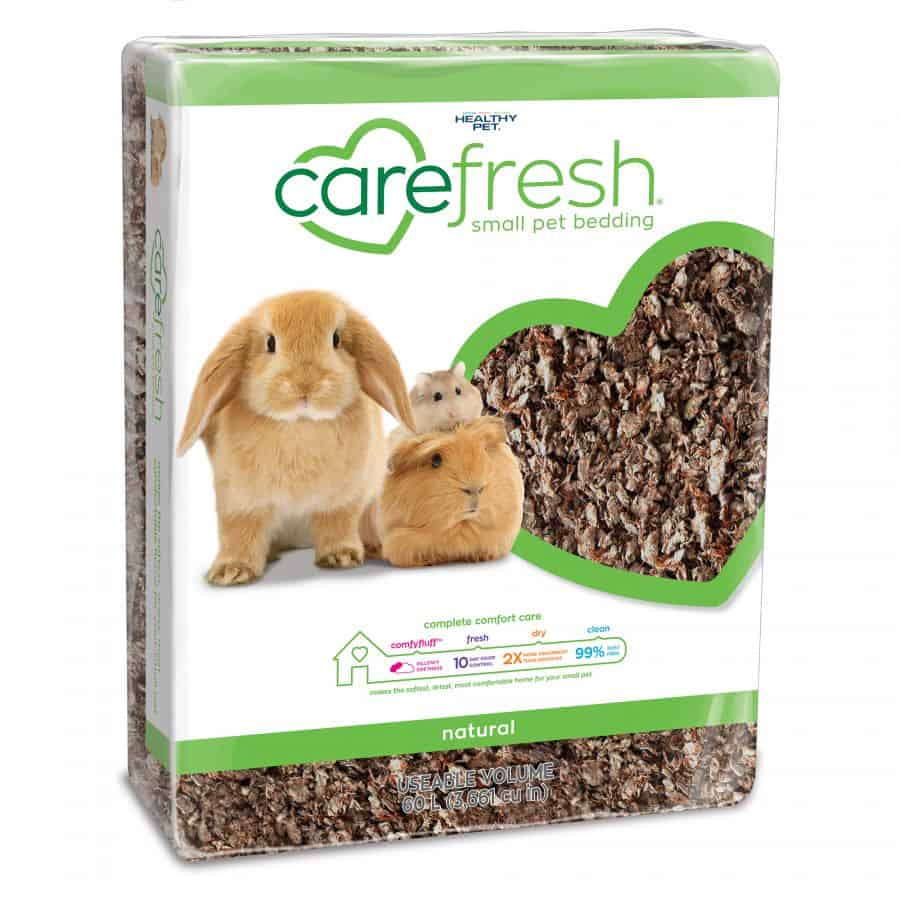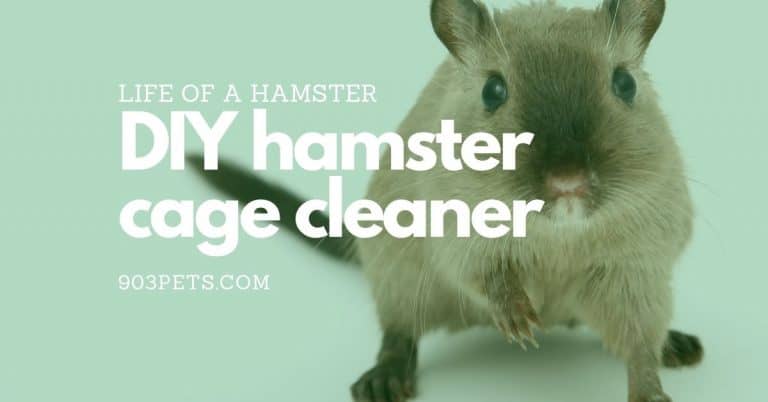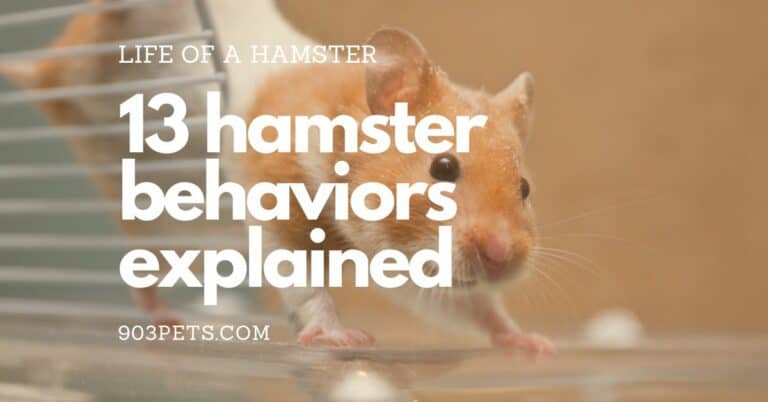Happy Hamster Homes – How to Choose a Hamster Home
You’ve probably seen a hamster before, they’re the little furry animals that run on their wheel all night. They come in many different colors and breeds like Russian dwarfs and Syrian Hamsters. For the most part, they are usually nocturnal and live an average of 2-3 years if cared for properly.
So, how much space does a hamster need? As a rule, hamsters need a minimum of 450 sq. in. of unbroken floor space. This means that stairs, ledges, and tunnels are not included in unbroken space calculation. The height of the cage walls should be at least 16-18″ tall which allows for 10″ of bedding depth in some areas which promote natural behaviors.
Hamsters need a large enclosure with enough space to move around as much as needed. Hamster habitats that are too small can lead to health problems such as arthritis or obesity. It’s very important that your hamster has a large enough cage so that he/she doesn’t feel cramped when burrowing, eating, or running on their hamster wheel because too little space can be stressful for them and cause health issues.

Before you select a name for your hamster, let’s look at the top criteria for purchasing a hamster enclosure and then check out some recommendations of hamster enclosures you can buy if you are not going to DIY.
Our Pick For Best Hamster Bedding
Studies and research suggest that paper bedding is best for our hammies. The Carefresh natural paper bedding for small animals is our top pick to use, today.
What We Like:
- Natural paper bedding
- 99% dust free – Reduced cause of respiratory issues for hamsters and human in some cases.
- Up to 10 Days of ammonia odor control
- Good for tunneling and burrowing
- Reduced chance for cuts from sharp portions
- Good absorbency

What To Look For In A Hamster Home [Criteria]
Size
When it comes to buying a hamster home, size is the biggest downfall or most store-bought enclosures or cages. Most of the time, a hamster’s home is much too small for him to burrow or even move around.
The length, width and height of the hamster cage are the primary measurements to review.
For small hamster species like the dwarf hamster, some resource say they need a minimum of an enclosure that is 8 gallons or 30 liters per hamster or larger. A typical measurement of an 8-gallon enclosure is 17″ x 9.8″ x 9.8″.
The general rule is 450 square inches of space,. We actually recommend 600 sq. in of unbroken floor space.
The Syrian Hamster is larger than other varieties of dwarf hamsters and requires more space to live. So, for a Syrian or similar-sized species, be on the hunt for at least a 30-40 gallon enclosure. Bigger is even better.
If you want to cut to the chase and see what cages we recommend, our hamster home guide spells it out. We even include price per sq. in. for a variety of popular options.
Material
Most commonly, hamsters are kept in wire cages with a plastic base and a wire top. However, we do not recommend these. There are other options for the material used to make the habitat, so let’s look at some of them.
Wire Cages
Wire cages are argued as the best because they allow for good airflow through the habitat. They also are often the cheapest to purchase as well. However, there are many downsides to these wire cages.
The biggest problem with wire cages sold in pet stores for hamsters is that they are way too small to be healthy for hamsters. They are made to look attractive to children and are inexpensive compared to better options.
Most wire cages have a shallow plastic bottom that does not allow for deep enough bedding. Check out our hamster bedding depth resource for more details.
Wire is a material that may rust over time or have sharp edges that could possibly injure your hamster’s feet or legs.
Finally, especially for dwarf hamsters, the wire grid can be deadly. Hamsters may try to get through the wire grate of the cage and get stuck. This can prove harmful to your hamster.
Glass Aquariums (Recommended Hamster Habitat)
This type of enclosure is one of the better options for a number of reasons including the fact that glass aquariums are readily available in many shapes and sizes.
A glass aquarium as a hamster habitat provides the best view for you to watch your hamster and they are easy to clean.
The main downside is that glass is expensive compared to other products, but it can be reused for many years or even re-sold for a good portion of your initial investment.
Aquariums also are rather tall compared to other options. This allows for significant bedding depth that provides ample room for the burrowing habits of your hamster.
Plastic Habitats
There are some clear plastic, modular habitats for hamsters. They have typically have a small solid floor and plastic tunnels and levels similar to the wire cages sold at pet stores.
The primary problem with these types of enclosures is that they are about the same size as the wire cages in terms of height and depth, which again is usually too small. Your hamster needs floor space. Manufacturers include tubes, tunnels and other space in the calculations of size. To a hamster, this is useless because floor space is what matters most.
Another problem with fun-looking plastic habitats is that they are very difficult to clean. You will need to take the levels and tubes out of your cage each and every time you clean which will be time-consuming.
We do not recommend plastic hamster habitats, although large, rugged plastic containers can be effective hamster homes.
Wooden
Wooden hamster enclosures are certainly not the least expensive option. And, there are both pros and cons to wood hamster cages.
The primary benefit is that you can make your own cage. Most people have the tools and ability to create wood projects. This provides a great sense of fulfillment and accomplishment knowing that you made something with your hands for your pet.
However, commercial wooden hamster homes often have problems with the wood rotting if it gets wet. Hamsters pee. When the wood structure absorbs the hamster pee it can never fully be cleaned. This can lead to strong unpleasant odors over time.
It may also chip or crack depending on the type of wood used to build the cage.
Hamsters may find the wood as something good to gnaw on which after long enough will compromise the integrity of the structure.
Finally, many people don’t want to deal with the time and care needed to maintain an all wooden hamster habitat.
Shape
The shape of a hamster cage is not super important. However, the amount of actual floor space available to the hamster is critically important.
So, if you choose a rectangular or square shape hamster habitat it is important to be sure that the measurements are in fact relatively large. If you have a vertical multi-level enclosure or a uniquely shaped habitat, be sure to determine the total flat, useable floor space.
The last thing we want to do as hamsters owners is limit their movement and abode them in small enclosures.
Another note about shapes is that the fewer corners there are, the easier it will be to thoroughly clean. Imagine a star-shaped enclosure with many narrow angled corners. Get out your toothbrush, you’re going to need it at each cleaning.
Don’t forget that hamsters can escape their cages. But, did you know there are locations where they are found that are statistically more likely? Yup, we ran the numbers and listed it out for you in our Lost Hamster Locations articles.
Quality
The quality of a hamster home is important and how long the investment will last as a good hamster home.
The best materials for a hamster home are glass and acrylic. It is best to find aquariums made for fish as they will not contain toxic chemicals in their construction. Glass/acrylic aquariums used for hamster enclosures should have a sturdy top cover with a mesh screen that provides plenty of ventilation while preventing hamster escapes.
Warranty
Higher-quality enclosures will include better warranties. When a manufacturer is proud of the quality of their product, they are more apt to warranty their workmanship.
Glass and acrylic aquarium manufacturers offer a variety of warranties from 30-days to a lifetime. This should tell you something about the quality of the product. American Aquariums offers a lifetime warranty while Aqueon’s warranty varies from 90-days to 5 years depending on the size of the tank from 2.5 gallons to 55 gallons.
If going for a wood structure, avoid pine or cedar. Instead, look for oak or maple wood for the enclosure as they are harder and more durable. These tend to come with a 1-year manufacturer warranty.
Is a 19.5w x 11d x 10.5h hamster cage big enough?
Well, let’s see.
A 19.5w x 11d x 10.5h hamster cage with nothing cluttering up the floor will have a maximum of 214.5 square inches of continuous, unbroken floor space. This is well below the bare minimum rule of 450 sq. in. and significantly below our recommended 600 sq. in. requirement.
So, No, a 19.5w x 11d x 10.5h hamster cage is not big enough. Look for a larger cage that meets the 450 sq. in. minimum or greater.
Conclusion
When looking for a great hamster home, there are several factors to review including size, material, shape, quality and warranty. Remember, floor space is the most important size requirement for your hamster followed by bedding depth.
If you are looking for the best hamster cages to buy that are appropriately sized, check out our hamster cage guide where we break down the sizes, bedding depth, and even price per square inch.
If you think your pet is ill, call a vet immediately. All health-related questions should be referred to your veterinarian. They can examine your pet, understand its health history, and make well informed recommendations for your pet.
903pets.com Staff


![How to Pet a Hamster: 9 Happy vs. Unhappy Signs 3 Do hamsters like to be petted and held? [Answers]](https://cdn-0.903pets.com/ifywhoft/2021/05/How-to-Pet-a-Hamster-Happy-vs.-Unhappy-Signs-768x402.jpg)




